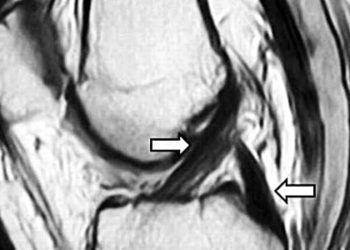Neuraxial anesthesia associated with decreased 30-day all-cause mortality for patients undergoing lower limb revascularization
1. Among patients undergoing lower limb revascularization, the use of neuraxial compared with general anesthesia was associated with decreased 30-day all-cause mortality.
Evidence Rating Level: 2 (Good)
Although endovascular interventions are increasingly common for the surgical management of peripheral artery disease, lower limb revascularization surgeries like endarterectomy and arterial bypass are still frequently performed. This comparative effectiveness study evaluated whether use of neuraxial anesthesia or general anesthesia for patients undergoing lower limb revascularization would be associated with improved clinical outcomes. Patients were recruited from multiple centers across Ontario, Canada. The primary outcome was 30-day all-cause mortality; secondary outcomes included in-hospital cardiopulmonary and renal complications and postoperative length of hospital stay, among others. 20,988 patients were included in the analysis, of whom 6,453 received neuraxial anesthesia (mean [SD] age = 70.6 [10.7] years, 33.0% female) and 14,535 received general anesthesia (mean [SD] age = 67.6 [12.7] years, 32.8% female). Of note, the use of neuraxial anesthesia declined by 17% over the course of the study period. Death within 30 days of surgery occurred in 204 (3.2%) patients who received neuraxial anesthesia and in 646 (4.4%) who received general anesthesia; after multivariable, multilevel analysis, the risk was found to be significantly lower in patients receiving neuraxial anesthesia (aOR 0.68, 95% CI 0.57 to 0.83, p < 0.001). This corresponds to a number needed to treat of 139 to prevent one death at 30 days by favoring the use of neuraxial anesthesia. Moreover, the use of neuraxial anesthesia was associated with a decreased risk of in-hospital cardiopulmonary or renal complications (aOR 0.73, 95% CI 0.63 to 0.85, p < 0.001) as well as a reduced length of hospital stay (aOR -0.5 days, 95% CI -0.3 to -0.6 days, p < 0.001). In all, this study suggests that using neuraxial anesthesia over general anesthesia for lower limb revascularization is associated with a decreased risk of postoperative morbidity and mortality. Prospective studies, though, are needed to clarify these findings.
Click to read the study in BMJ
Image: PD
©2020 2 Minute Medicine, Inc. All rights reserved. No works may be reproduced without expressed written consent from 2 Minute Medicine, Inc. Inquire about licensing here. No article should be construed as medical advice and is not intended as such by the authors or by 2 Minute Medicine, Inc.


![Novel biodegradable sirolimus-eluting stents non-inferior to durable everolimus-eluting stents [BIOSCIENCE trial]](https://www.2minutemedicine.com/wp-content/uploads/2014/09/Taxus_stent_FDA-e1607803635904-350x250.jpg)






